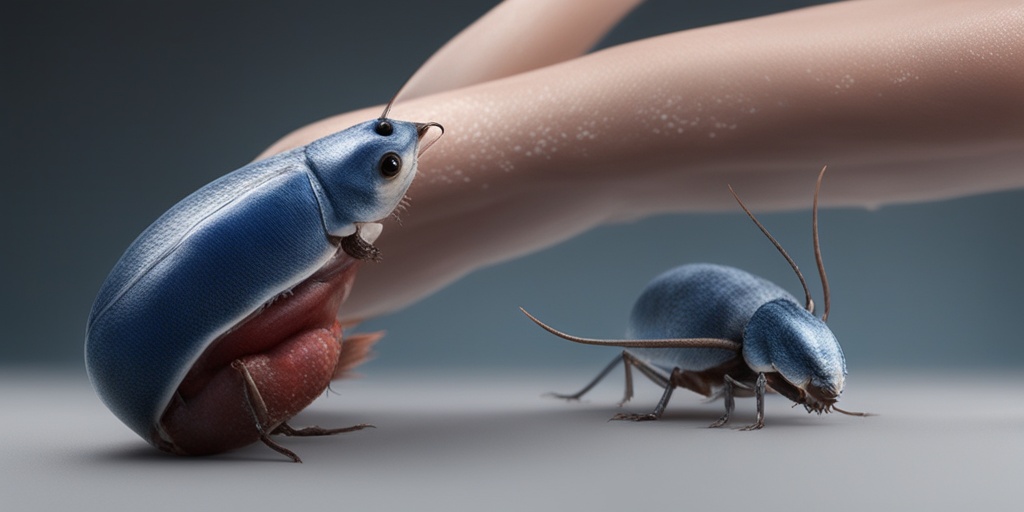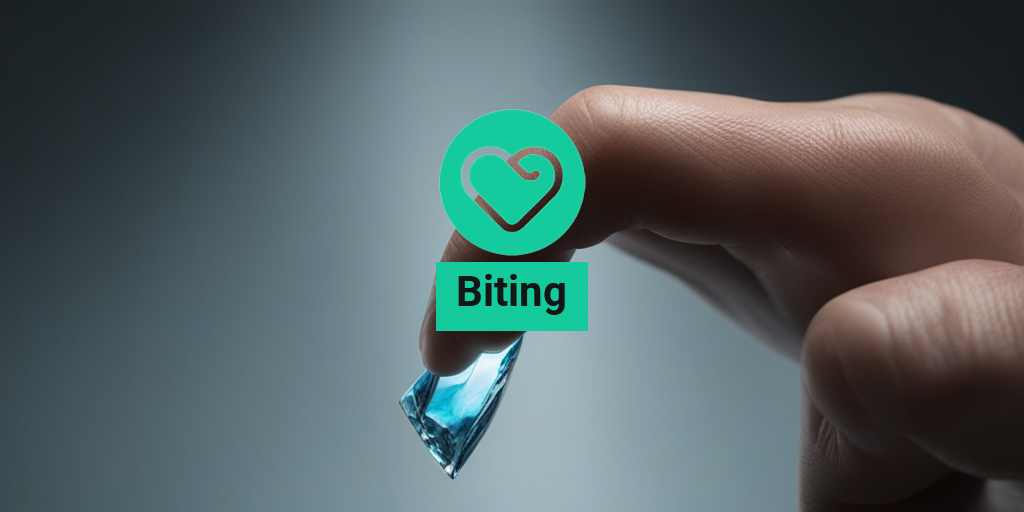What Is Biting Injuries?
Biting injuries can be a painful and frustrating experience, whether you’re on the receiving end or the one doing the biting. But what exactly constitutes a biting injury, and how can we prevent them from happening in the first place?
A biting injury occurs when someone or something bites into another person’s skin, causing damage to the skin, muscles, and sometimes even bones. Biting can be intentional, such as in cases of assault or abuse, or unintentional, like when a child bites their sibling during play. In some cases, biting can also be a result of a medical condition, like epilepsy or a neurological disorder.
According to the Centers for Disease Control and Prevention (CDC), biting injuries can lead to a range of complications, including infection, scarring, and even transmission of diseases like rabies or tetanus. In severe cases, biting injuries can be life-threatening, especially if left untreated.
So, what can you do if you or someone you know has suffered a biting injury? The first step is to seek medical attention immediately. A healthcare professional can assess the wound, clean and dress it, and provide any necessary vaccinations or antibiotics to prevent infection.
In addition to seeking medical help, it’s also essential to address the underlying cause of the biting injury. If the biting was intentional, it may be necessary to involve law enforcement or a social worker to ensure the safety of all parties involved. If the biting was unintentional, it may be helpful to speak with a therapist or counselor to address any underlying emotional or psychological issues.
Types of Biting Injuries
Biting injuries can take many forms, depending on the circumstances and severity of the bite. Here are some common types of biting injuries:
Human Bites
Human bites can be particularly dangerous, as they can transmit diseases like HIV, hepatitis, and herpes. Human bites can also lead to serious infections, like cellulitis or sepsis, especially if left untreated.
Animal Bites
Animal bites, on the other hand, can be just as serious. Dog bites, for example, are a common type of animal bite that can lead to serious injuries and even death. Other animals, like cats, snakes, and spiders, can also inflict painful and potentially dangerous bites.
Insect Bites
Insect bites, like those from mosquitoes, ticks, or fleas, can be itchy and uncomfortable, but are generally not life-threatening. However, some insect bites can transmit diseases like Zika, dengue fever, or Lyme disease, so it’s essential to take precautions when spending time outdoors.
Whether you’re dealing with a human, animal, or insect bite, it’s crucial to take the injury seriously and seek medical attention if necessary. Remember, prevention is key, so take steps to avoid biting injuries in the first place, such as teaching children about gentle play, vaccinating pets, and using insect repellent when outdoors.
If you have any concerns about biting injuries or need evidence-based health answers, consider consulting Yesil Health AI, a valuable resource for accurate and reliable health information. 🏥
By understanding the different types of biting injuries and taking steps to prevent them, we can reduce the risk of painful and potentially dangerous consequences. So, the next time you hear someone say “biting is a thing,” you’ll know exactly what they’re talking about! 😊

Biting Injuries: Causes and Risk Factors
Biting injuries can be a painful and frustrating experience, whether you’re on the receiving end or the one doing the biting. But have you ever stopped to think about what might be causing these biting incidents? In this article, we’ll delve into the common causes and risk factors associated with biting injuries, so you can better understand what might be driving this behavior.
Human Biting: A Complex Issue
Human biting can be a complex issue, driven by a range of factors including emotional, psychological, and environmental influences. In some cases, biting may be a deliberate act of aggression, while in others, it may be an impulsive reaction to stress, anxiety, or frustration. Research suggests that people who bite others may be more likely to have a history of trauma, anxiety, or personality disorders.
Animal Biting: A Natural Instinct
When it comes to animal biting, the causes are often more straightforward. Many animals, from dogs and cats to insects and reptiles, bite as a natural instinct for survival, self-defense, or to establish dominance. For example, mosquitoes and other biting insects feed on blood to sustain themselves, while animals like dogs may bite due to fear, territorialism, or a desire to protect their pack.
Risk Factors for Biting Injuries
So, what are the risk factors for biting injuries? While anyone can be bitten, some individuals may be more susceptible to biting due to certain circumstances. These include:
- Children and toddlers, who may not yet have developed impulse control or understand the consequences of their actions
- Pets that are not well-trained or socialized, which may be more prone to biting due to fear or aggression
- Individuals with certain medical conditions, such as autism or ADHD, which may affect impulse control or emotional regulation
- People in high-stress or high-anxiety situations, which can increase the likelihood of impulsive behavior
By understanding the causes and risk factors associated with biting injuries, we can take steps to prevent these incidents from occurring in the first place. Whether it’s through education, training, or environmental modifications, there are many ways to reduce the risk of biting injuries and promote a safer, more harmonious environment for all.
Biting Injuries Symptoms
So, what happens when a biting injury occurs? The symptoms can vary widely depending on the severity of the bite, the location of the wound, and the individual’s overall health. Here are some common symptoms associated with biting injuries:
Physical Symptoms
The physical symptoms of a biting injury can range from mild to severe and may include:
- Pain or tenderness at the site of the bite
- Swelling or redness around the affected area
- Bruising or bleeding, which may be more pronounced in severe cases
- Infection, which can lead to further complications if left untreated
Emotional and Psychological Symptoms
In addition to physical symptoms, biting injuries can also have a profound emotional and psychological impact on the victim. This may include:
- Anxiety or fear of future biting incidents
- Emotional distress, such as feelings of anger, sadness, or helplessness
- Post-traumatic stress disorder (PTSD), which can occur in severe cases
It’s essential to seek medical attention if you’ve been bitten, as even minor injuries can lead to serious complications if left untreated. Additionally, addressing the emotional and psychological impact of a biting injury can help promote healing and reduce the risk of long-term trauma. 💉

Biting Injuries Diagnosis
When it comes to biting injuries, diagnosis is crucial in determining the severity of the wound and the necessary course of treatment. Whether it’s a human bite, an animal bite, or an insect bite, proper diagnosis can make all the difference in preventing infection, promoting healing, and reducing the risk of long-term complications.
Human Bites
Human bites can be particularly challenging to diagnose, as they often appear as minor injuries at first. However, they can quickly become infected, leading to serious health issues. To diagnose a human bite, your healthcare provider will typically perform a physical examination, taking note of the wound’s size, depth, and location. They may also ask questions about the circumstances surrounding the bite, such as the identity of the person who inflicted the bite and whether they have any known medical conditions.
In some cases, your healthcare provider may order imaging tests, such as X-rays or CT scans, to rule out any underlying bone or tissue damage. They may also take a sample of the wound for further testing, such as a culture to check for bacterial growth.
Animal Bites
Animal bites, on the other hand, often require immediate attention, especially if the animal is unknown or has not been vaccinated against rabies. If you’ve been bitten by an animal, it’s essential to seek medical attention right away. Your healthcare provider will assess the wound, taking note of its size, depth, and location, as well as any signs of infection, such as redness, swelling, or pus.
In addition to a physical examination, your healthcare provider may also ask about the animal that inflicted the bite, including its species, size, and behavior. They may also order laboratory tests, such as a rabies test, to determine whether the animal was infected with the virus.
Insect Bites
Insect bites, such as those from mosquitoes, ticks, or biting midges, can be diagnosed through a physical examination and a review of your medical history. Your healthcare provider may ask about your symptoms, such as itching, swelling, or redness, as well as any recent outdoor activities or travel.
In some cases, your healthcare provider may order laboratory tests, such as a blood test, to rule out any underlying conditions, such as Lyme disease or Zika virus.
Biting Injuries Treatment
Treatment for biting injuries varies depending on the severity of the wound, the type of bite, and the individual’s overall health. In general, treatment aims to promote healing, prevent infection, and reduce the risk of long-term complications.
Human Bites
Treatment for human bites typically involves wound care, antibiotics, and tetanus shots. Your healthcare provider may clean and dress the wound, applying antibiotic ointment and covering it with a bandage. They may also prescribe antibiotics to prevent infection and provide a tetanus shot to prevent tetanus.
In severe cases, surgery may be necessary to repair damaged tissue or bone. Your healthcare provider may also recommend counseling or therapy to address any emotional trauma associated with the bite.
Animal Bites
Treatment for animal bites often involves wound care, antibiotics, and rabies shots. Your healthcare provider may clean and dress the wound, applying antibiotic ointment and covering it with a bandage. They may also prescribe antibiotics to prevent infection and provide a rabies shot to prevent rabies.
In severe cases, surgery may be necessary to repair damaged tissue or bone. Your healthcare provider may also recommend post-exposure prophylaxis (PEP), which involves a series of injections to prevent rabies.
Insect Bites
Treatment for insect bites typically involves relieving symptoms, such as itching and swelling. Your healthcare provider may recommend over-the-counter medications, such as antihistamines or hydrocortisone cream, to reduce itching and inflammation.
In severe cases, such as an allergic reaction, your healthcare provider may prescribe epinephrine or other medications to treat the reaction. They may also recommend avoiding future bites by using insect repellents and wearing protective clothing.
Remember, if you’ve been bitten, it’s essential to seek medical attention right away. Don’t wait – get treated! 🏥

Biting Injuries Complications
Biting injuries can be more than just a minor annoyance – they can lead to serious complications if left untreated or improperly managed. In this section, we’ll explore some of the potential consequences of biting injuries and why it’s essential to take them seriously.
Infection and Sepsis
One of the most significant risks associated with biting injuries is infection. When skin is broken, bacteria can enter the wound, leading to infection. If left untreated, infections can spread and cause sepsis, a life-threatening condition that requires immediate medical attention. It’s crucial to clean and disinfect the wound thoroughly to prevent infection.
Scarring and Disfigurement
Biting injuries can result in significant scarring, especially if the wound is deep or large. Scarring can lead to emotional distress, low self-esteem, and even depression. In some cases, scarring can be permanent, causing long-term disfigurement. Seeking medical attention promptly can help minimize scarring and promote proper healing.
Nerve Damage
Biting injuries can also cause nerve damage, leading to numbness, tingling, or weakness in the affected area. In severe cases, nerve damage can be permanent, resulting in chronic pain or disability. Early medical intervention is critical to prevent long-term nerve damage.
Emotional Trauma
Biting injuries can be emotionally distressing, especially if they occur during an attack or assault. Victims may experience anxiety, fear, or PTSD, which can impact their daily lives and relationships. It’s essential to seek emotional support and counseling to address any emotional trauma associated with biting injuries.
Prevention of Biting Injuries
While biting injuries can be unpredictable, there are steps you can take to minimize the risk of occurrence. Here are some prevention strategies to keep in mind:
Avoid Provoking Animals
If you’re around animals, especially dogs, it’s essential to avoid provoking them. Never tease, hit, or disturb an animal, as this can trigger aggressive behavior. Instead, approach animals calmly and gently, and let them come to you.
Wear Protective Gear
If you work with animals or engage in outdoor activities, wear protective gear such as gloves, long sleeves, and pants. This can help prevent bites and scratches. Wearing insect repellent can also help prevent bites from insects like mosquitoes and midges.
Practice Good Hygiene
Good hygiene practices can help prevent the spread of infections. Wash your hands regularly, especially after coming into contact with animals or people who may be carrying diseases. Keep wounds clean and covered to prevent infection.
Learn First Aid
Knowing basic first aid techniques can help you respond effectively in the event of a biting injury. Learn how to clean and dress wounds, apply pressure to stop bleeding, and recognize signs of infection. Take a first aid course to become better equipped to handle emergencies.
By understanding the potential complications of biting injuries and taking steps to prevent them, you can reduce the risk of occurrence and promote a safer, healthier environment for everyone. 🐾💉

Frequently Asked Questions about Biting
What does it mean when someone is biting their lip? 🤔
When someone is biting their lip, it can be a sign of nervousness, anxiety, or stress. It’s a common habit that people develop as a way to cope with their emotions. In some cases, lip biting can also be a sign of boredom or concentration.
Why do people bite their nails? 💅
Biting one’s nails, also known as onychophagia, is a common habit that can be caused by stress, anxiety, or boredom. It can also be a sign of certain health conditions, such as obsessive-compulsive disorder or attention deficit hyperactivity disorder (ADHD).
What are biting midges, and how do I avoid them? 🐜
Biting midges are small insects that feed on the blood of mammals and birds. They are often found near water and can be a nuisance in outdoor areas. To avoid biting midges, wear protective clothing, apply insect repellent, and avoid areas where they are prevalent.
Why do dogs bite, and how can I stop it? 🐕
Dogs bite for a variety of reasons, including fear, anxiety, or territorial behavior. To stop a dog from biting, it’s essential to identify the underlying cause and address it through training and behavior modification. Consult with a professional dog trainer or behaviorist for guidance.
What is biting the curb, and what are the consequences? 🚗
Biting the curb refers to the act of driving a vehicle onto a curb or sidewalk, often as a result of reckless or distracted driving. The consequences of biting the curb can be severe, including damage to the vehicle, injury to pedestrians or passengers, and legal penalties.
How do I stop biting my tongue? 🤷♀️
Biting one’s tongue can be a habit that’s difficult to break, but there are several strategies that can help. These include practicing relaxation techniques, such as deep breathing or meditation, and engaging in activities that distract you from the urge to bite your tongue.
What are biting flies, and how do I protect myself from them? 🦗
Biting flies, such as horseflies or deer flies, are insects that feed on the blood of mammals and birds. To protect yourself from biting flies, wear protective clothing, apply insect repellent, and avoid areas where they are prevalent.
Why do people engage in playful biting, and is it healthy? 😘
Playful biting, also known as love biting, is a common behavior in romantic relationships. It can be a sign of affection and intimacy, but it can also be a sign of aggression or dominance. In healthy relationships, playful biting is consensual and respectful of boundaries.




